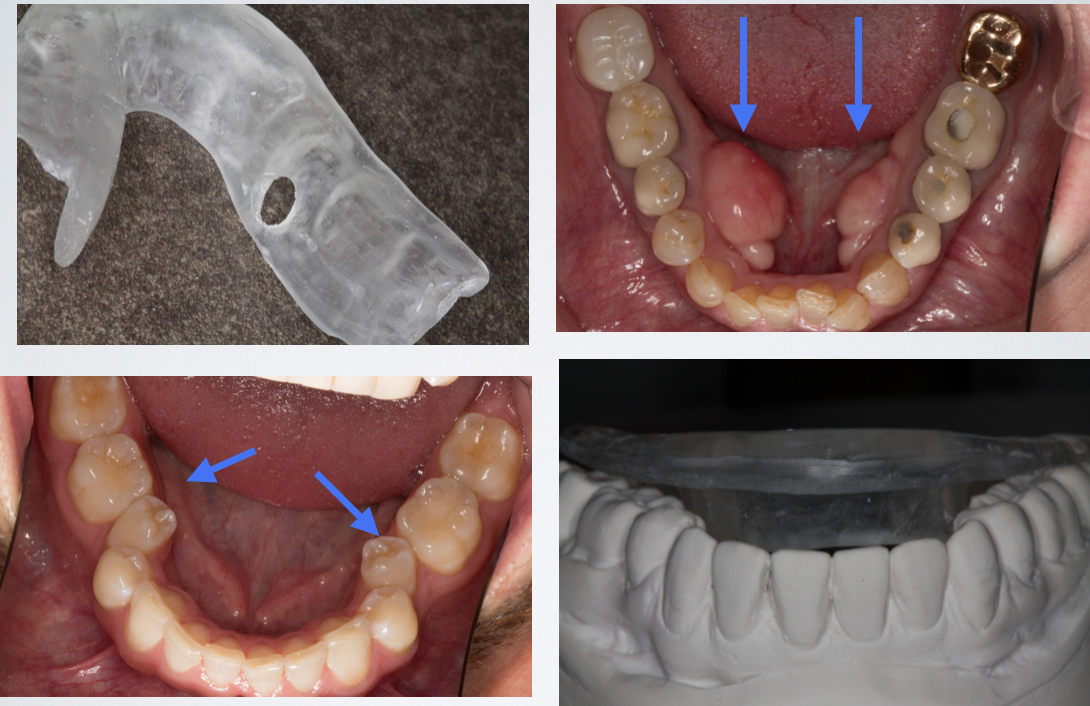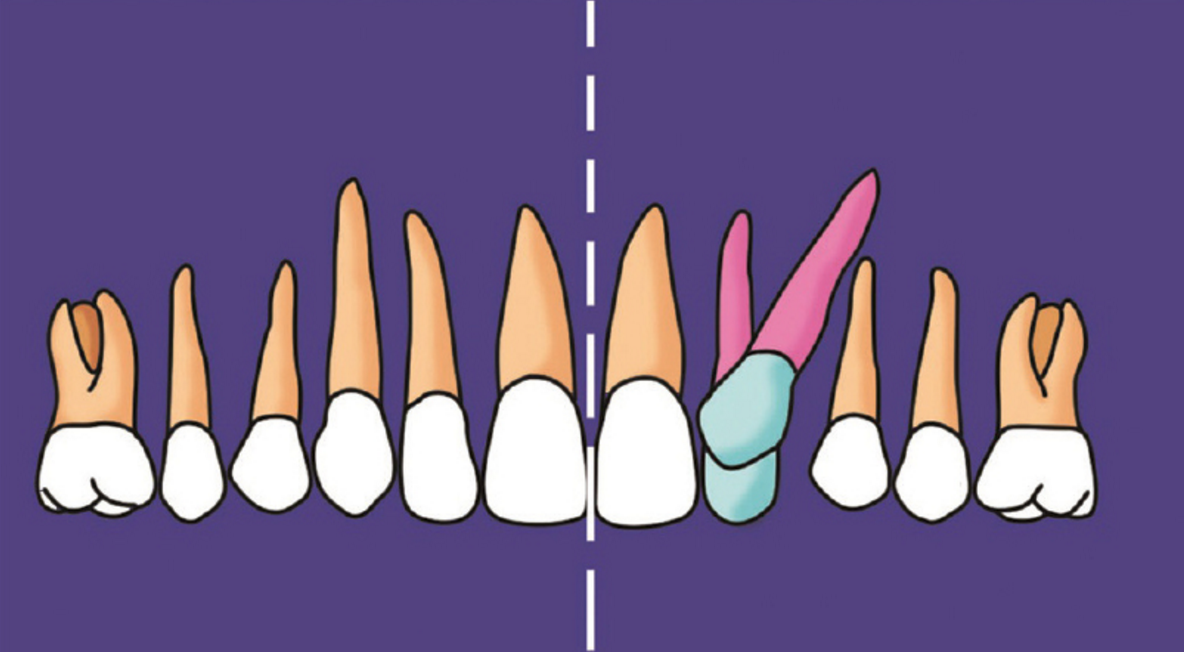Ideally the splint is designed to prevent failures from happening. But when they do, it is good to be able to understand how and why the failure occurred, and to know what to do about it. Splint repair and tips to prevent failure are helpful to predict and manage the occasional difficulties in splint therapy. Understanding…
Read MoreThe JVA is a screening tool for TMJ Dysfunction. The Joint Vibration Analysis is an instrument resembling a set of headphones, but instead of listening to music, it listens to the jaw joints. A healthy jaw joint creates very little friction, whereas a damaged joint is noisier. Depending on the type of vibration created, a…
Read MoreCanine transposition means the canines are in the position of missing lateral incisors — or in the switched position of upper premolars. This rare but non pathologic variation of tooth position can be challenging to determine how the biting forces should be spread across the teeth. In general, a splint for canine transposition can be managed…
Read MoreI spent the past 2 days in ALF (Advanced Lightwire Functional) appliance training with Dr. Mike Hoefs. Dentistry in America is continuously recognizing new heroes, who have bravely look at the way the teeth are connected to the rest of the body — Dr. Hoefs is one such hero of mine! Wow! The science behind this…
Read MorePatients managing an airway problem with night-time use of a mandibular advancement device may develop a posterior open bite. Attempting to reapproximate the posterior teeth in this occlusal distortion involves mandible retrusion and OA flexion, thus reversing the natural lordosis of the neck. Accurately mounted study models taken after the cervical curvature has been supported…
Read MoreSphenoid position is a prominent feature of a R TMCC positional pattern. In that position, the greater wing of the sphenoid is more superior on the Right side, than on the Left. Without regard for the position a patient is in (R TMCC versus neutrality), even the most conscientious dentist will adjust a bite splint…
Read MorePatients with bilateral posterior crossbites tend to have deep palates and bilaterally extended cervical chains. Depending on the degree of interdigitation of the teeth, the balancing interferences of the lingual cusps of the lower molars against the buccal cusps of the upper molars can make the canines out of position from a functional standpoint. …
Read MoreDr. Caughey is one of the sweetest, most kind spirited people I’ve ever met. She truly cares about me getting better and does everything she can to help me on the long journey to recovery. 10 years of daily headaches, jaw pain, neck pain, and back pain; 3 years going from doctor to doctor, trying…
Read MoreLordosis of the neck is the normal curvature needed for a person to have a full range of motion in rotation, flexion, and extension. Patients with a loss of that cervical l0rdosis can mask the degree of bite distortion present. Patients with bilaterally displaced TMJ disks will frequently have masked the severity of the anterior open bite distortion…
Read MoreThis anterior bite distortion shows an uneven amount of anterior open bite. The upper right canine looks as if it never touches the tooth below, and is called a non-functional tooth. However, even a canine out of position can receive sensory input from a food bolus. Designing a splint to engage this tooth with “kissing”…
Read More


